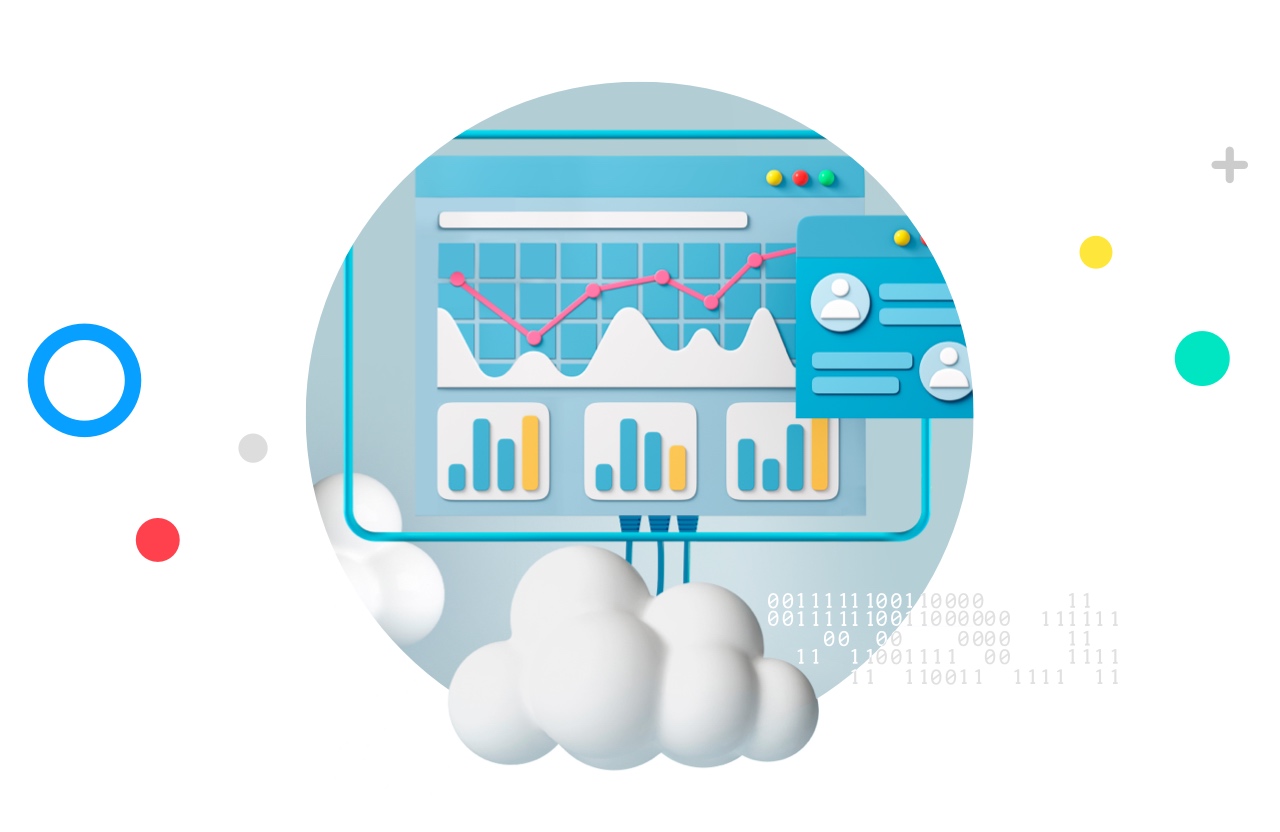What issue can we solve for you?
Type in your prompt above or try one of these suggestions
Suggested Prompt



Insights
Five Common Misconceptions about Cloud
Five Common Misconceptions about Cloud
Over the last couple of years, there has been an increasing demand in the adoption of cloud computing. It gradually transformed from being an innovative concept to becoming the backbone that many companies rely on and trust.
According to Gartner, most organizations will be leveraging cloud as a business necessity by 2028.
Nevertheless, there are some current beliefs about cloud based on misconceptions. These beliefs can be a stumbling block in understanding the business, operational and economic benefits of cloud, and must be addressed to enable organizations to capture cloud’s full value. Many decision-makers don’t quite understand cloud, its advantages or how secure it is. Companies that effectively counteract these myths will derive the greatest benefits from their move to cloud.

Ready to take your cloud journey to the next level?
Head over to our dedicated cloud modernization landing page to chart your modernization journey.
Misconception one:
Cloud is less secure and can get easily hacked
Security is paramount, so this is a valid concern for clients. Traditionally, companies believed that on-premises meant secure. But over the past few years, chief security officers across the sector have acknowledged that on-premises data centers can be hacked remotely. In fact, it’s manual processes and insider threats that pose a significant risk.
Many organizations have not yet built up the experience to design cloud foundation in a secure fashion. Cloud providers like AWS, Microsoft and Google Cloud invest billions of dollars every year to ensure that their solutions are secure and offer top-notch security features. These providers ensure that data can be encrypted and masked as it gets transferred. Similarly, while computing, the data can be secured via homomorphic encryption. This allows the service providers to perform operations on the data while having it remain.
What ultimately drives trust in security depends on companies gathering the relevant experience in how to implement security features on their own foundation. This will drive the security of their cloud environment that they are working in. Institutions that define the correct policies, adopt a secure DevSecOps operating model and train or hire the right talent can actually achieve safer operations in their cloud environments than on-premises. They ensure a secure configuration by implementing single sign-on (SSO), password policies, multifactor authentication, access permissions and two-step verification procedures for specific processes.
In summary, security is about growing experiences at organizations to set up a cloud environment in a secure way. This involves using features provided by cloud providers, which will build the experience and, therefore, the trust in security around cloud.
Misconception two:
The location of the data is unknown
Controlling data access is critical for protecting people’s data and privacy and maintaining customer trust. Ownership of data, data residency and data sovereignty are driving conversations amongst C-suite executives in both new digital companies and established organizations.
Many conversations about data residency begin because people are concerned as private citizens. But it’s a very different game when the client is a business customer with the ability to choose features in order to build a secure system. Incumbent organizations need more education about how to manage data residency in the cloud and how to develop a new way of thinking about data location within the organization. Leading cloud providers support financial institutions in meeting data residency requirements. Their customers are able to designate the data center region in which their business-critical data and apps are stored. Financial institutions can mandate the physical locations where data can be stored, as well as how and when it can be transferred.
Misconception three:
Cloud is extremely expensive
Cloud expenses are an urban myth. Cloud is the catalyst for a broader business transformation, and its benefits can outweigh any expenditure in technology. But to see savings results, there are two things that organizations need to do.
First, they need to set up a new cost management capability. They are moving from a fixed cost and depreciation model to a more variable cost set with different pricing options from cloud providers. Companies must create the expertise within the organization to understand how consumption drives a certain cost. Additionally, they must determine how the institution can implement and change demand to fit a better profile.
Second, they need to decommission old infrastructure that continues to incur costs. However, this can be challenging for many firms because they end up with a data center that needs to be decommissioned, with some applications that can't be migrated to the cloud.

Ready to take your cloud journey to the next level?
Head over to our dedicated cloud modernization landing page to unlock the full potential of cloud for your organization with downloadable resources.
Misconception four:
The cloud market is established and requires a one-off transition or strategy
The cloud providers market is developing rapidly in terms of the number of players and what they offer. This requires an ongoing capability at organizations to scan the market and regularly update the cloud infrastructure strategy.
Provider examples globally include three leading providers: AWS, GCP and Azure. Yet a long list of credible providers is stepping in, including Alibaba, Oracle and Salesforce.
In the services arena, cloud providers are actively promoting hybrid cloud services, offering additional services such as GCP’s BigQuery in data and creating ecosystems with independent software vendors (ISVs). This is creating a dynamic vendor marketplace, which can offer significant opportunities for companies.
Misconception five:
After cloud migration, there is no going back
Cloud providers usually create copies of the uploaded content and store them in multiple locations as backups in case their data centers are unavailable for any reason. This ensures that the data will not be destroyed or lost for good.
That being said, from a CEO perspective, there is no going back. Why would a company want to increase its costs and reduce the revenue being generated?
Certain capabilities are simply better hosted in cloud, and data is one of them. In discussions with clients about what workload should move to cloud, data and digital channels come up most often. Digital channels often represent software that is easy to migrate and already Microsoft services-based. Data allows for AI capabilities to function better in cloud. To tap into the inherent value of cloud computing, many institutions are starting by moving their data. This gives them time to evaluate how to best handle the rest of their infrastructure in the future.
How cloud can help organizations thrive in the digital age
The cloud is not infrastructure-at-play, but rather the catalyst to digital business transformation. It offers a significant impact on lowering operating costs and creating new sources of revenues. Due to its extremely agile nature, cloud is extremely cost-effective, especially in the long run. As the market changes at an extremely high speed, cloud allows organizations to beat their competitors by rapidly evolving in tandem. They can easily scale their cloud capacity to respond to the industry's pulse while being protected against cybercrimes and malware.
Related Articles
-
![]()
How Banks Can Succeed in the Cloud
With better cloud-enabled technological processes banks will be more responsive to challenges.
-
![]()
Cloud Acceleration Program
Discover the Cloud Acceleration Program – helping financial services firms build a Google Cloud foundation faster.
-
![]()
Engineering & Cloud Transformation
Engineering Technology to address today’s challenges and create value








